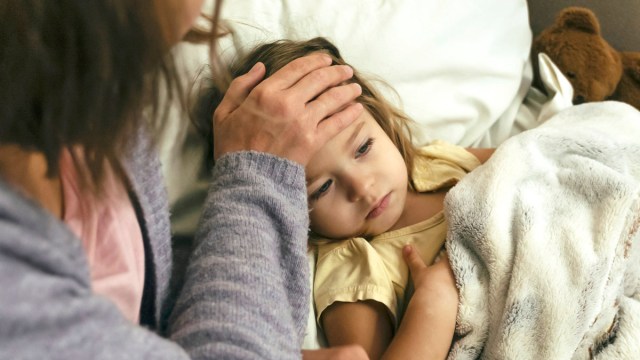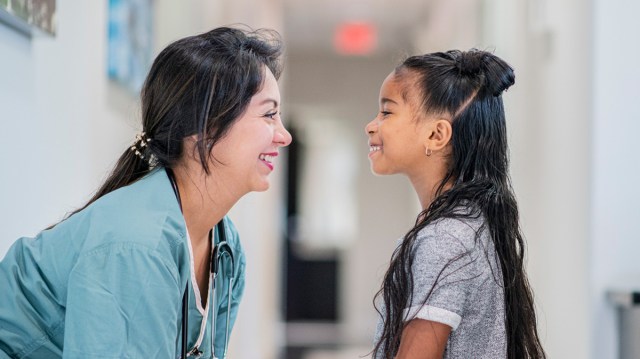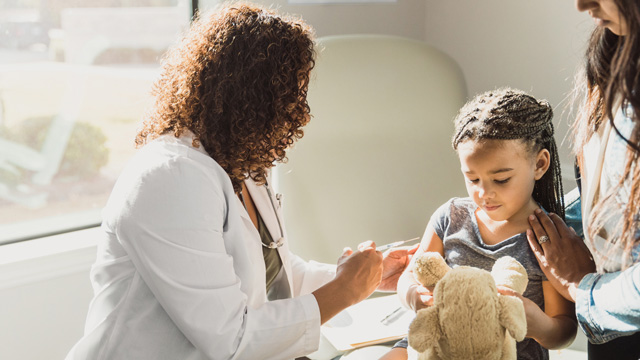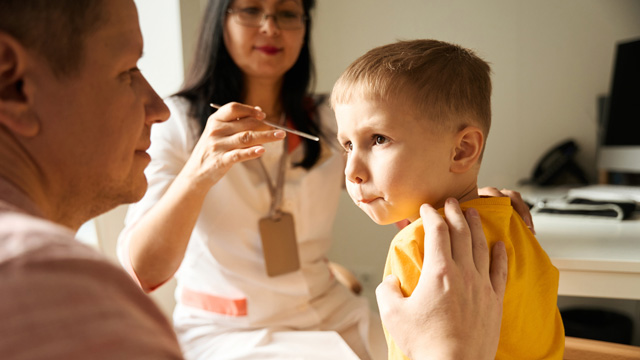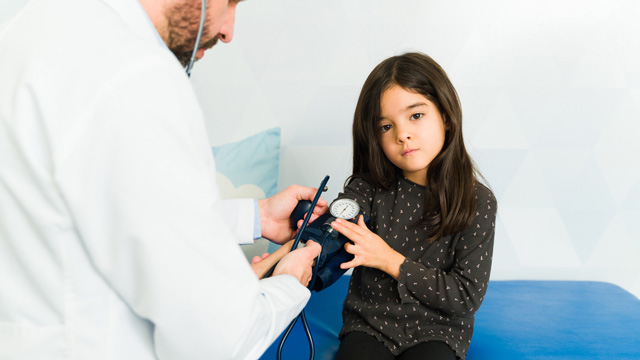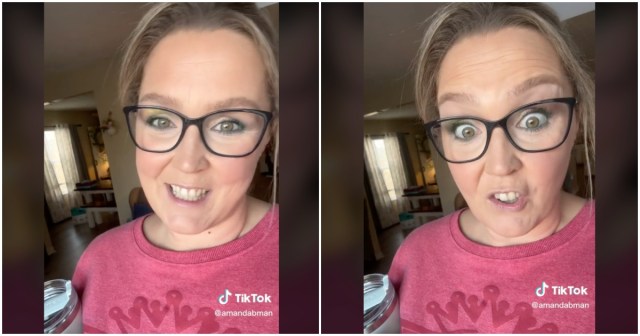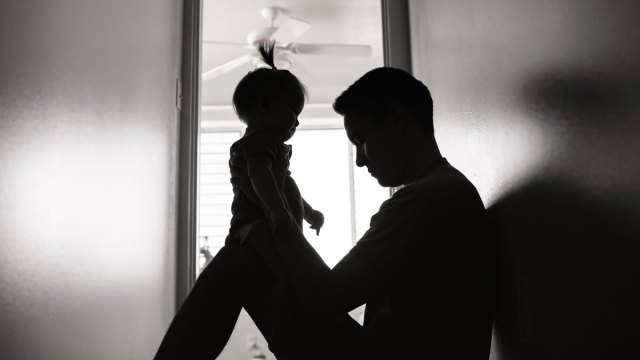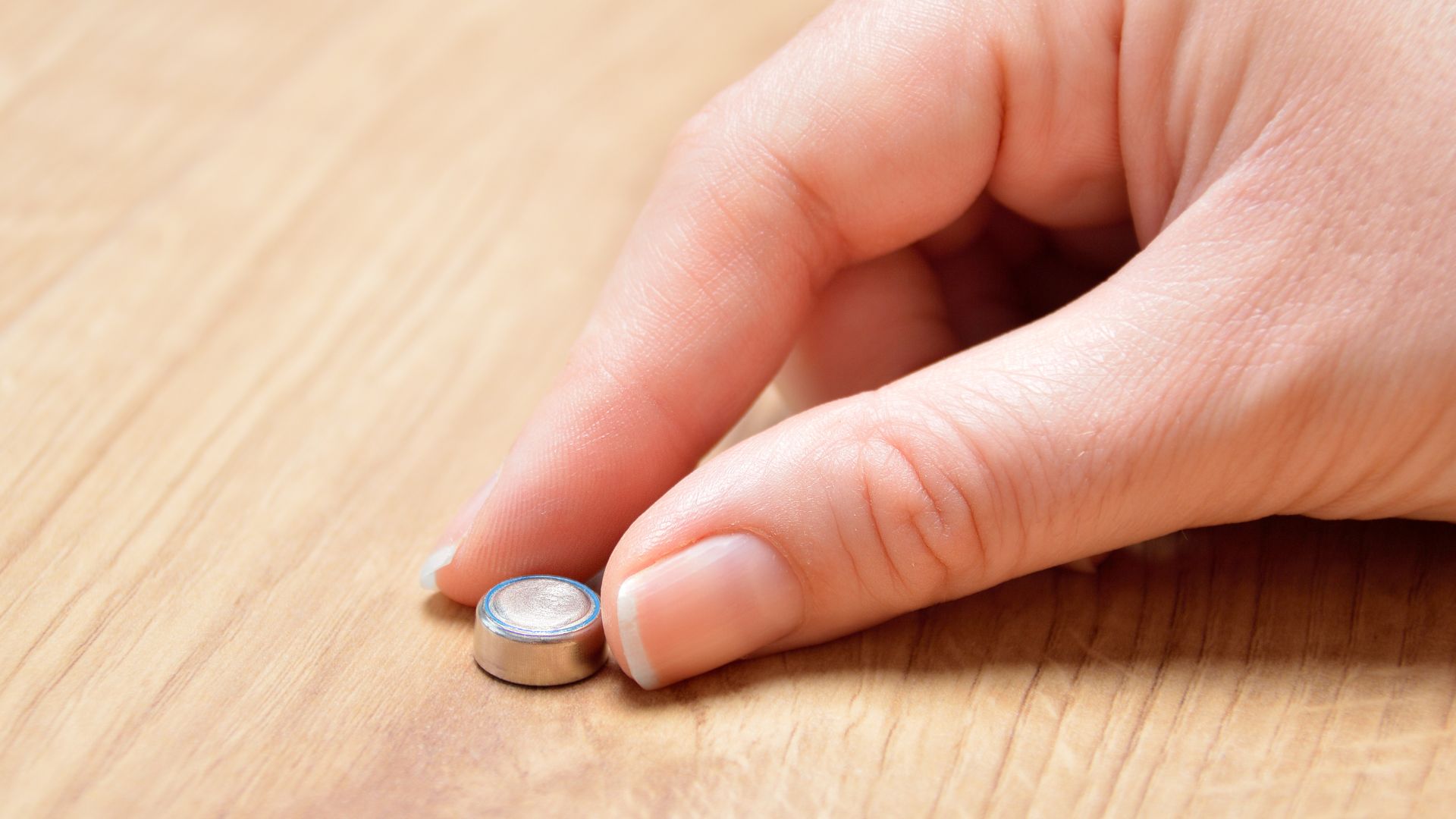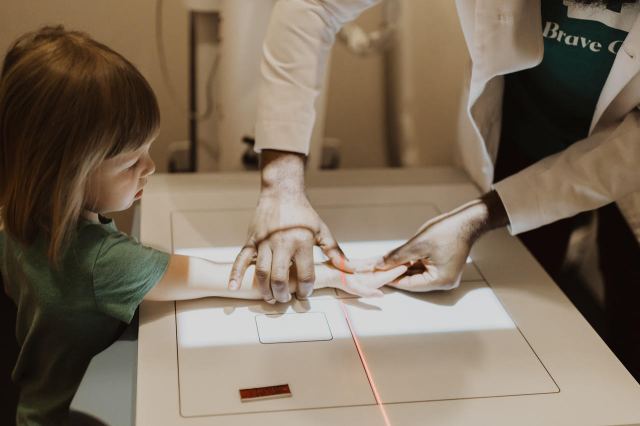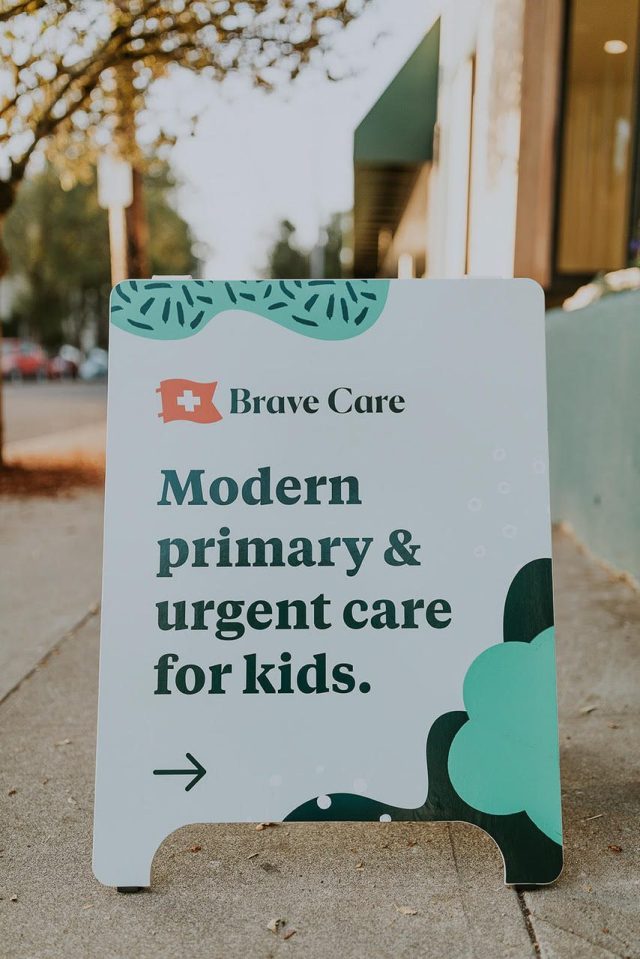You’ve probably asked your child’s pediatrician all about feeding schedules, vaccines, sleep struggles, and food allergies. Perhaps your little one suffers from constipation (or groan, the opposite), cries when you place them in their crib, or just had their first fever. While all of these are valid new-parent concerns, we’ve got some news for you. There are even more questions you need to ask your child’s pediatrician.
Luckily, Dr. Candice Jones, a board-certified, Florida-based pediatrician is here to clue us in. In addition to being both a doctor and a mom, Dr. Jones hosts the KIDing Around With Dr. Candice podcast and is the author of High Five Discipline: Positive Parenting for Happy, Health, Well-Behaved Kids. The next time you take your baby (or toddler) to the doctor, be sure to ask them about these six critically important topics.
Safe Sleep Practices
Sleep—rightfully so—is one the main concerns new parents have. Not only are parents downright exhausted, but the baby is, too. While many new parents focus on simply getting a little (or ideally, a lot) more shut-eye, it’s critical that parents understand and practice safe sleep practices. Dr. Jones reminds us that we must work to prevent SIDS, also known as sudden infant death syndrome, and she wishes parents would ask more about it.
The American Academy of Pediatrics (AAP) offers SIDS-prevention guidelines. First, infants should always be placed on their backs. Their sleep space should be a “crib, bassinet, or portable play yard” that contains a “firm, flat mattress and a fitted sheet.” Swings and carseats are not suitable safe sleep spaces. The baby’s sleep space should be free of any “loose blankets, pillows, stuffed toys, bumpers, and other soft items.” When possible, breastfeed the baby and “avoid smoking.”
Water Safety
As summer quickly approaches, you may want to enjoy the water with your little one, be it a sprinkler, a swimming pool, or a local splash pad. Don’t forget about bath time, too. The goal, of course, says Dr. Jones, is to “prevent drowning.” However, any outdoor water activities also bring on the risk of your baby getting overheated, dehydrated, or sunburned. Remember to ask your pediatrician about safe water practices in every sense of the phrase.
The AAP reminds parents that babies can drown in a mere one to two inches of water. Never, ever leave your little one unattended in or near water. Gather bath time supplies and have them within reach prior to bathing your baby, and always check the water temperature prior to bathing to prevent burns. Always check to make sure bathrooms (think, toilets—a bowl of water), swimming pools, and even large containers (examples: pet water bowl and coolers) are secure. Younger babies are immobile, but as they get closer to the toddler years, they become very water-curious.
Related: 25 Parent-Approved Tips for Taking Baby to the Beach
After-Hours Illness
Any experienced parent will tell you that kids rarely get sick when it’s convenient for parents. Whether your kid spikes a fever on a weekend, a holiday, or late into the night, Dr. Jones wants parents to be prepared. So when exactly do you cal the pediatrician after hours? The threshold to call the after-hours line is different from doctor to doctor, so be sure to ask questions like: What (fever) temperature concerns you? What other symptoms warrant a call, such as lethargy or vomiting? What fever and/or symptoms require us to go straight to urgent care or the ER? Bottom line: When in doubt, make the call.
Johns Hopkins Medicine shares these guidelines for parents. Take your child to the ER when “your child less than 2 months old” has a fever of “100.4 degrees Fahrenheit” or above. A suspected broken bone, a child hitting their head (and showing signs of passing out or losing consciousness), a seizure, dehydration, fast and heavy breathing, or “gasping for air,” and any “gaping cuts” warrant a trip to the emergency room.
Related: 5 Things ER Pediatricians Would Never Let Their Kids Do
Growth and Development
Dr. Jones says that one question all new parents should ask their child’s pediatrician is: Is my child developing and growing well? She forewarns that parents shouldn’t “assume your child is doing well in these areas if your doctor doesn’t mention it.” As the parent, you know your child best. Dr. Jones points out that “early detection and intervention of developmental delays and any growth concerns should be addressed.”
She also shares that these can be “overlooked in busy clinics,” so parents have to be and stay aware of their child’s growth (height, weight, and head circumference) and development. One of the best ways to do this is take a notebook and pen to every appointment and take notes, especially if your child’s doctor’s office doesn’t use a digital record-keeping medical system that patients can access online.
Carseat Safety
One of the most confusing and mind-boggling issues new parents face is carseat safety. What was considered safe and acceptable when we parents were children is no longer ok. There are two issues to make sure you ask the pediatrician about. The first is to ask is: Can I leave my child in their car seat—and for how long? Remember, never, ever leave your child in an unattended car. The second question to ask is: Which carseat is best for my child, and what are the guidelines for making sure my child is properly secured in the seat? The National Highway Traffic Safety Administration (NHTSA) offers this detailed response.
Did you know there are four different types of carseats ranging from an infant seat to a simple seatbelt? The NHTSA’s car seat finder tool allows you to enter your child’s birthday, height, and weight to help you choose the best car seat. They also remind parents that it is critical to “choose and use the right care seat correctly every time your child is in the car” to keep them safe.
Parenting Quandaries
Dr. Jones reassures parents that “nothing should be off-limits” when talking to your child’s doctor about “the health and well-being of your child.” Questions about discipline, attachment, speech and language, eye and ear health, skin concerns, and even creating boundaries should all be fair game. You can feel reassured that your kid’s pediatrician may have resource recommendations, and they have the ability to make referrals for speech evaluations, for example.
No matter how many books promise to be an all-inclusive guide to raising a baby or toddler, the research and standards are continuously changing. This is why it’s important to not brush aside your “silly question” or concern and approach your child’s pediatrician with honesty and a willingness to learn. A great doctor will gladly educate you, and when they cannot, they’ll offer you a resource or referral. Of course, you can also access Dr. Jones’ podcast or read her book for ideas, but always bring up specific-to-your-child concerns with your doctor.






